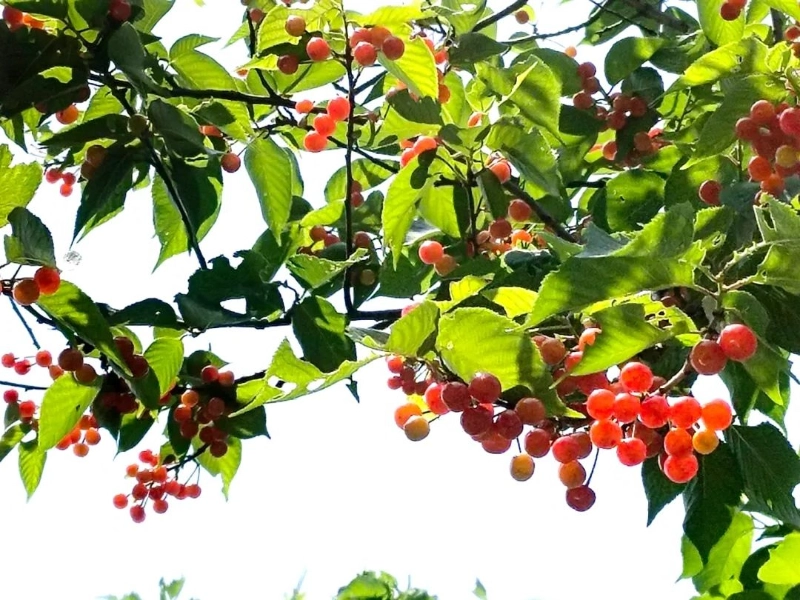Cherry Trees: A Beautiful Journey from Blossom to Fruit
Advertisement
3. From Flower to Fruit: The Development of Cherries

Advertisement
A new and equally amazing phase in the life cycle of the cherry tree starts when the amazing exhibition of cherry blossoms starts to fade: the growth of fruit. Over several weeks, this complicated process from blossom to fruit takes place including intricate biological mechanisms and environmental interactions.
The trip starts right following successful pollination. Usually by bees or other insects, once a bloom is pollinated the petals fall away and the ovary at the base of the bloom starts to expand. Fruit development begins with this. The tree directs its energy into tending to these growing fruits, so shifting resources from vegetative development to fruit output.
Early on, the developing cherries are little, green, firm. They are not at all like the plump, vivid fruits we think of as ripe cherries. These young fruits change dramatically over the next several weeks. As they develop, they get bigger and progressively alter in colour. The particular colour evolution depends on the variety of cherry; in some cases it moves from green to yellow, then to red, and lastly to a deep crimson or near-black.
The fruits are not only getting bigger but also changing internally during this period. As the cherry softens, sugars start to gather and provide the fruit its distinctive sweetness. Simultaneously, several molecules that add to the taste character and nutritional worth of the cherry are synthesised.
Environmental elements greatly affect how cherries develop. Production of carbohydrates by photosynthesis depends on enough sunshine. Appropriate water supply is also crucial; too little can produce tiny, dry fruits; too much will split the cherries. Temperature also affects things; severe heat or cold could harm the growing fruits.
Cherry farmers especially need to closely monitor and control this phase. Since the growing fruits might draw different insects and birds, pest control becomes very important. Some producers defend their crop using netts or other protective devices. Early in the season, good trimming also pays off during this phase since it guarantees effective distribution of the tree's energy among the growing fruits.
You May Like
Advertisement

